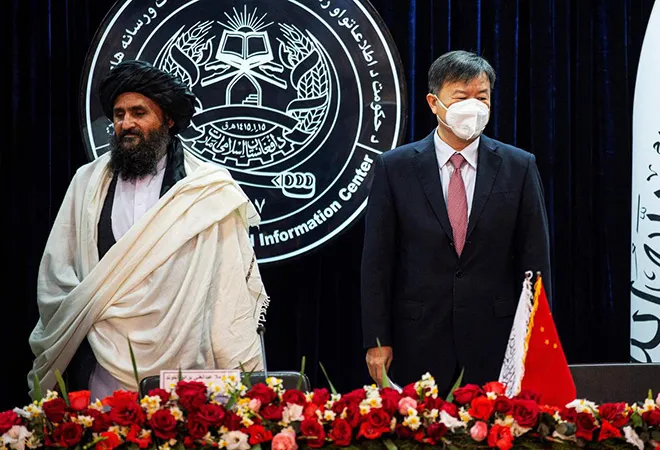-
CENTRES
Progammes & Centres
Location

Throughout the process of the Doha negotiations, which culminated with the United States (US)-Taliban exit deal (February 2020), the IS ecosystem and its online propaganda machinery continuously chided the Taliban for aligning with the US, and by association losing any upper hand in being leaders of the jihad against the enemy (the US, the West).In a recent issue of pro-IS propaganda publication Sawt-al-Hind, aimed at the Indian sub-continent, a large writeup against the Taliban challenged the group’s approach to jihad from a historical perspective, questioning their nationalist take on Islam and conflict, rather than a larger theological one that goes beyond a political and a nation-State approach. It specifically highlighted the group's trajectory as being out of line in the post-Mullah Omar era. This ideation went further into history when the mujahideen fought against the erstwhile Soviet Union and blamed the former for invoking and institutionalising nationalism and tribalism against the communists, instead of fighting under an all-encompassing umbrella of Islamic ummah. Afghan scholar and diplomat Mohammed Moheq has highlighted the differences between the Taliban and the IS as strategic and cultural, rather than tactical. He highlights that while issues such as interpretation of Islam, fear, and violence as a tool, conflict with modern civilisation, and so on are commonalities between the two groups, the fact that the Taliban is much more realistic in its political agenda, which is guided by the geography and territory of Afghanistan, and behaves like a traditional State, now with a successful outreach to the West, is unpalatable to the IS. Unfortunately, this view may attract many, including the Taliban, to the IS who oppose this realpolitik.
The important takeaway from these relatively newer groups is that despite the nature of the Kashmir conflict, there may be attempts underway against the militancy’s design as a homogenous entity working towards a unipolar agenda to fragment it further and challenge security forces on multiple ideological fronts.The outward trend of the IS (via ISKP)—getting more active to showcase trans-regional reach, unlike the Taliban—has been visible in South Asia. However, contrary to belief, this trend is neither new, nor has ably expanded over time. Over the past few months, the IS and its alleged India affiliate, IS Hind Province (ISHP), have conducted “hits” against singular targets in Kashmir. In October, the IS claimed the killing of a non-Kashmiri street vendor in Srinagar. The same design of attack against similar targets was also claimed by The Resistance Front, a little-known group that is seen as an offshoot of Lashkar-e-Taiba. The IS has claimed such isolated attacks in Kashmir before, going as far back as 2014, and has a notorious track record of co-opting hyper-local militant trends that it may not even be involved in. The important takeaway from these relatively newer groups is that despite the nature of the Kashmir conflict, there may be attempts underway against the militancy’s design as a homogenous entity working towards a unipolar agenda to fragment it further and challenge security forces on multiple ideological fronts. There have been views aired in Western discourse that the Taliban can be a tool against the IS in Afghanistan, an area that can be a point of cooperation point between the likes of the US and the Taliban. Such ideas have raised significant concerns in New Delhi. Speaking at the fifth Indian Ocean Conference in the United Arab Emirates, Minister for external affairs, S Jaishankar, for the first time highlighted that the US withdrawal from Afghanistan “leaves both the immediate and extended region grappling with serious concerns about terrorism, radicalism, instability, narco-trafficking and governance practices. Given proximity and sociology, we are all affected one way or the other.” Finally, while Rawalpindi may revel over the outcomes in Afghanistan and its aims of dislodging Indian presence on its “other” border, it is imperative to remember that some of the most destructive attacks in South Asia in recent past have been connected to the IS, which is now increasingly looking at an expanding presence in Pakistan. The Taliban is in an odd position, an insurgency orchestrating a counterinsurgency for its survival. And South Asia is now the playground for this volatile experiment.
The views expressed above belong to the author(s). ORF research and analyses now available on Telegram! Click here to access our curated content — blogs, longforms and interviews.

Kabir Taneja is a Deputy Director and Fellow, Middle East, with the Strategic Studies programme. His research focuses on India’s relations with the Middle East ...
Read More +